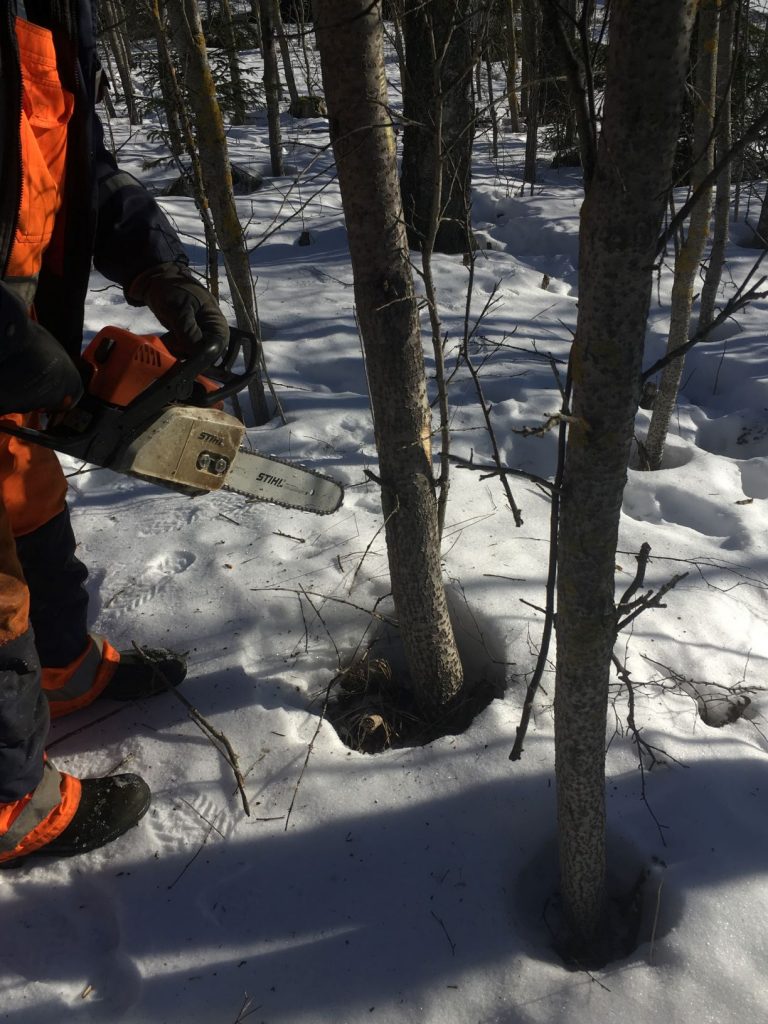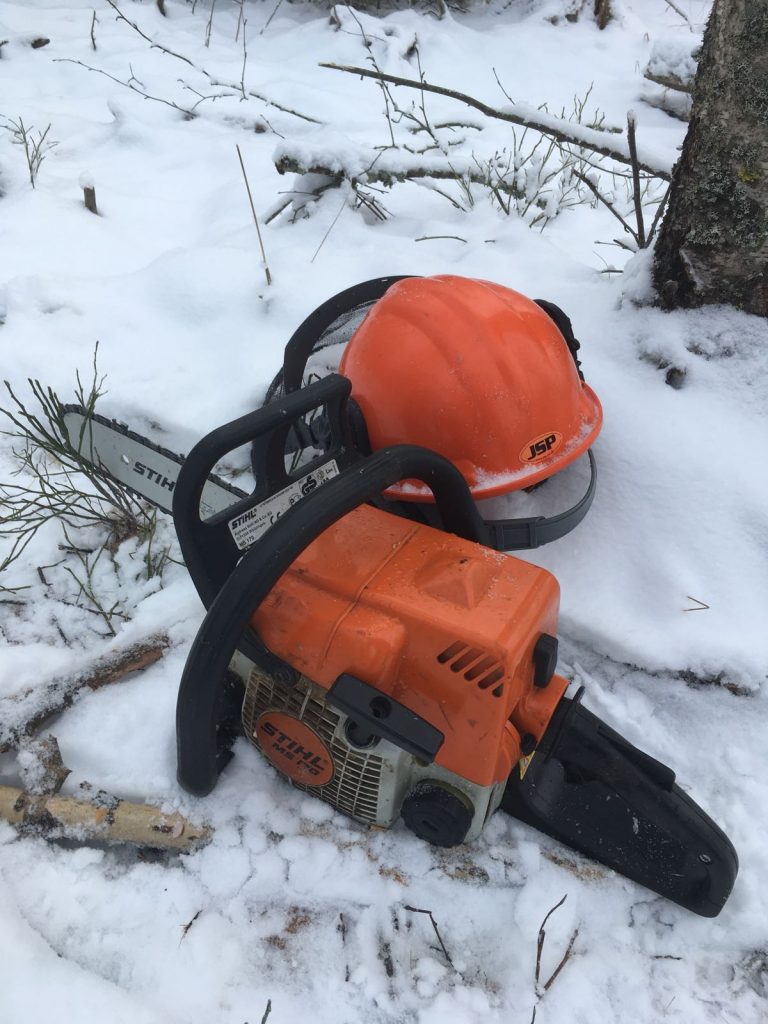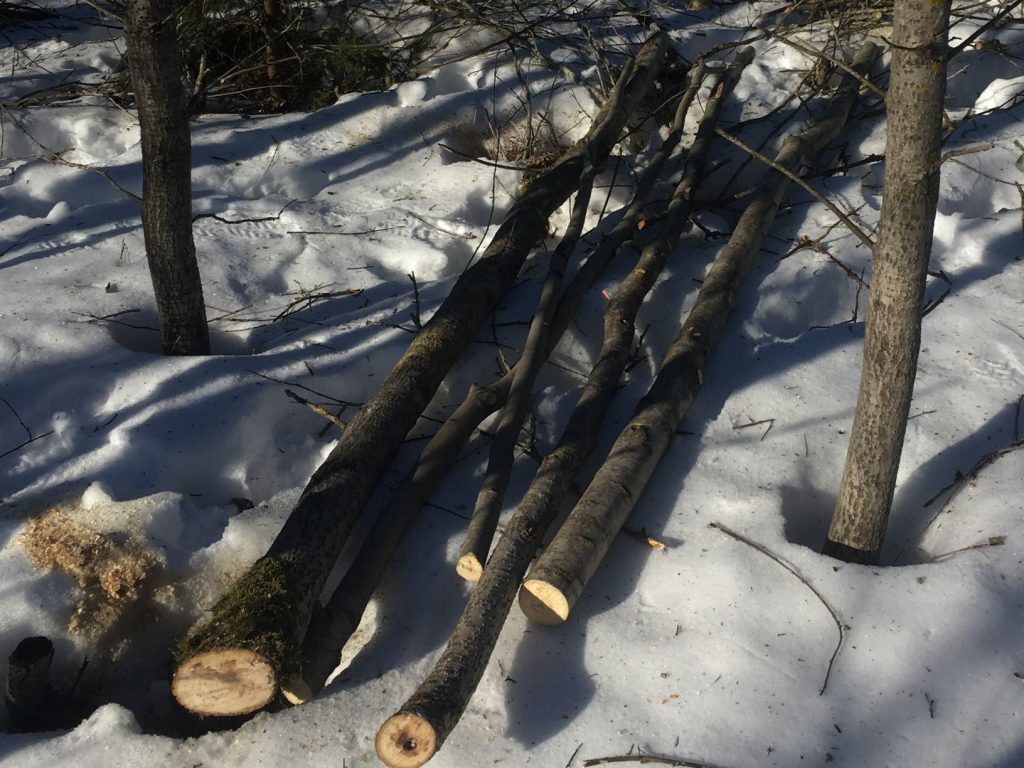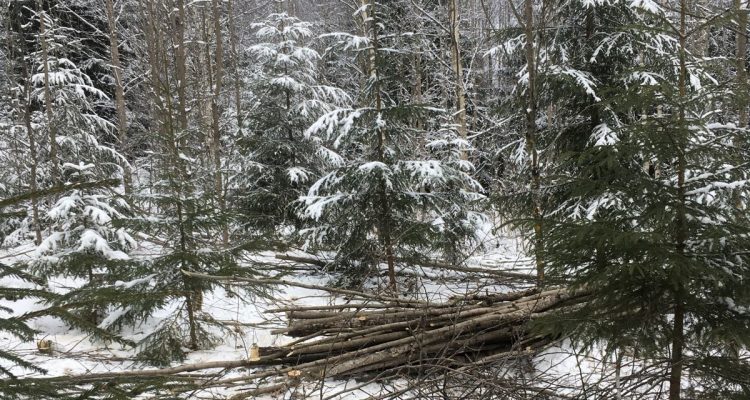We Finns live in and of forests, and forests cover more than 70 % of the land. Finland is in fact the most forested country in Europe, if we compare the proportional share of forest land to the country’s total size. 3 millon hectares of the Finnish forests are protected or under restricted use, which represents 13 % of the forest area. The rest is managed commercially, and roughly 60% of forests in Finland are privately owned. More than 10% of Finnish population has forest holdings in the immediate family. We do not spend a lot of time on “raking and cleaning our forests”, but forests are being managed in diverse ways. By the way, family ownership is the reason why the extensive everyman’s right to use forests for recreation was created in the first place. It was necessary to pass through the properties of others to get where you were going.
I’m not a forest owner, but I get to take part in planting seedlings, thinning, or even logging sometimes. It’s hard work, but I enjoy those activities as it means I get to spend plenty of time in the forest together with some friends or family members. It’s also interesting to learn about forestry, because by a wise utilisation and protection, forests will remain healthy and diverse for future generations. Last week we had a little project to thin out a section of forest in a traditional way, and make some firewood for ourselves at the same time.
What is forest thinning?
Younger commercially managed forests are typically thinned out periodically. During thinning, an average of 30 % of the trees in a forest are removed. The purpose of this is to improve the growth and quality of the remaining trees. Usually this is done with machinery, but many people still make all firewood they need in a traditional way, using a chainsaw and other basic equipment. The best time to make firewood is in winter, when the water content of trees is at its lowest and the snow is protecting the ground.

Protective clothing from head to toe
For me, there is something really satisfying about making my own firewood. It’s about acknowledging the resources that I use for heating a fireplace or sauna. It has always been my favourite method of mental relaxation – I have to focus on what I’m doing or I’m gonna hurt myself really badly!
Using the chainsaw is not an everyday task for me, but I can operate it safely. Even though we are not professionals, we are familiar with the basics and also know what kind of protective clothing is needed. Steel-toe work boots, helmets, ear plugs, and safety classes are accessories of our choice.

Out of the woods, on to my sauna
Four tree species are naturally predominant in Finland: Scots pine, Norway spruce, Downy birch and Silver birch. This forest in particular is a mixed, uneven-aged forest that has spruce, birch, pine, and aspen. Aspen trees don’t usually grow into big logs in these types of forests, but as they reproduce by sprouting and grow quickly in the beginning, they easilly conquer large areas and suppress the spruce or pine seedlings. Our task was therefore to thin out aspens and make more space for the existing softwood trees to grow.
After cutting down the trees that we selected, we pile them in a way that they get some air and start drying already in the forest. Later they will be collected and taken under cover to dry. Then they are sawn into smaller pieces, split and left to shelter to dry. In total they are drying for couple of years before they are used. This is one of way to make the combustion as clean as possible.

Forest industry is one of the key sectors for the Finnish economy, and for us Finns the sauna has a huge importance. At the same time we are increasingly concerned about climate change and the impact that burning wood has to the air quality. The increasing use of wooden raw materials is also a controversial topic. I believe that there needs to be balance, which is sustainable economically and environmentally. Wood is renawable and affordable resource, but forests are also known to be carbon dioxide sinks. The Finnish carbon storage is growing all the time and hopefully will continue to do so in the future.
Read also
We have also build a lean-to shelter once. It was a fun construction project, highly recommended to all.

